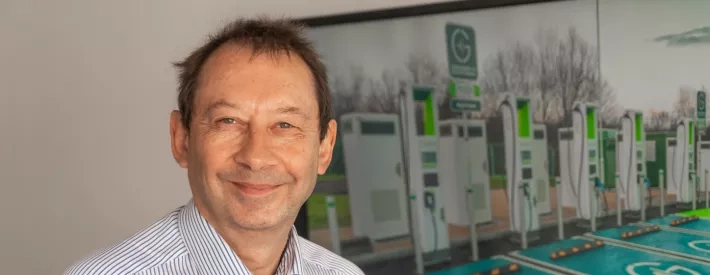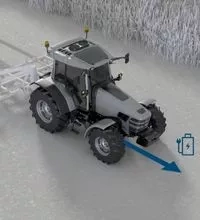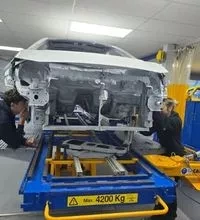Trucking on electric

The transport sector is the heart of the UK economy, without commercial vehicles nothing could happen. But while smaller, light commercial vehicles have been the focus for the shift to electrification, attention is now being turned to heavy goods vehicles.
Manufacturers are already heavily investing in electrified HGVs, with firms including mainstream names Scania, Volvo, DAF and Mercedes-Benz all producing eHGVs. In fact name any manufacturer and the likelihood is they’re developing an EV. But as with passenger vehicles, the charging network will play a critical role in the success of electrified commercial vehicles. And with batteries as large as 500kWh it’s a challenge but one that can’t be ignored.
Innovate to succeed
By 2040, all new HGVs will be zero emission and ahead of the deadline, the Electric Freightway project is investing over £100 million to lay the foundations for one of the biggest and most advanced charging networks designed specifically for electric trucks.
Funded as part of the Department for Transport and Innovate UK-backed Zero Emission HGV and Infrastructure Demonstrator programme, it’ll run until 2030.
“The point of this project is to prove the economic use case for electric HGVs,” says Pete Bishop, Chief Technology Officer at Gridserve. “We're doing a direct replacement of routes that currently run with diesel with electric traction with a whole variety of different haulers. We have car transporters, grain wagons, and gravel lorries over a whole range of different routes.”
The project will take an open-book analysis of all the data collected to show the real operating costs, which everyone expects will be cheaper. “The point of that whole project is to prove it,” says Bishop.
As well as data collection the Electric Freightway’s key objectives are:
• eHGV charging hubs installed at motorway service stations and truck stop locations
• More than 10 commercial depot charging locations for eHGVs
• Over 200 chargers capable of delivering 350kW
• Trial of two Megawatt-ready chargers
• Infrastructure to be supplied by 100% net zero energy
• Around 140 eHGVs to be used by UK-based companies to use the network
Power up
The Electric Freightway’s backbone of charging stations up and down the country will allow eHGVs to plug in while out on the road, with smaller units installed at depots.
“The 43kW AC charger is what we’re going to be using as the depot charging solution. It’s overnight charging for tractor units with 500kW batteries,” says Bishop. Out on the road things could get a lot bigger.
“The new thing that’s coming is the megawatt charging standard, MCS. That's 1,000 volts, 1,000 amps compared to the 500 amps we do now. There's a new generation of chargers coming to support that,” says Bishop.
But while that technology is on the way in reality Gridserve’s range of current charging stations could service the eHGVs.
“In actual fact, for most of the trucks, 360kW for 45 minutes is going to be good enough for now,” says Bishop. Which is why the project is currently looking to expand Gridserve’s network, with bigger bays and booking system the firm is developing so electric HGVs can easily access charging stations.
And ideally vehicle charging will coincide with driver breaks, minimising any operational costs for hauliers.
Fast turnover
The shift to electric HGVs could happen faster than people expect. Unlike passenger cars where the average age is getting older, hauliers churn through trucks at a much faster rate.
“I think it will toggle really quickly because these things are intensively used and replaced every two or three years. We could potentially see a lot of our diesel fleet disappear and be replaced by electric pretty quickly,” says Bishop.




